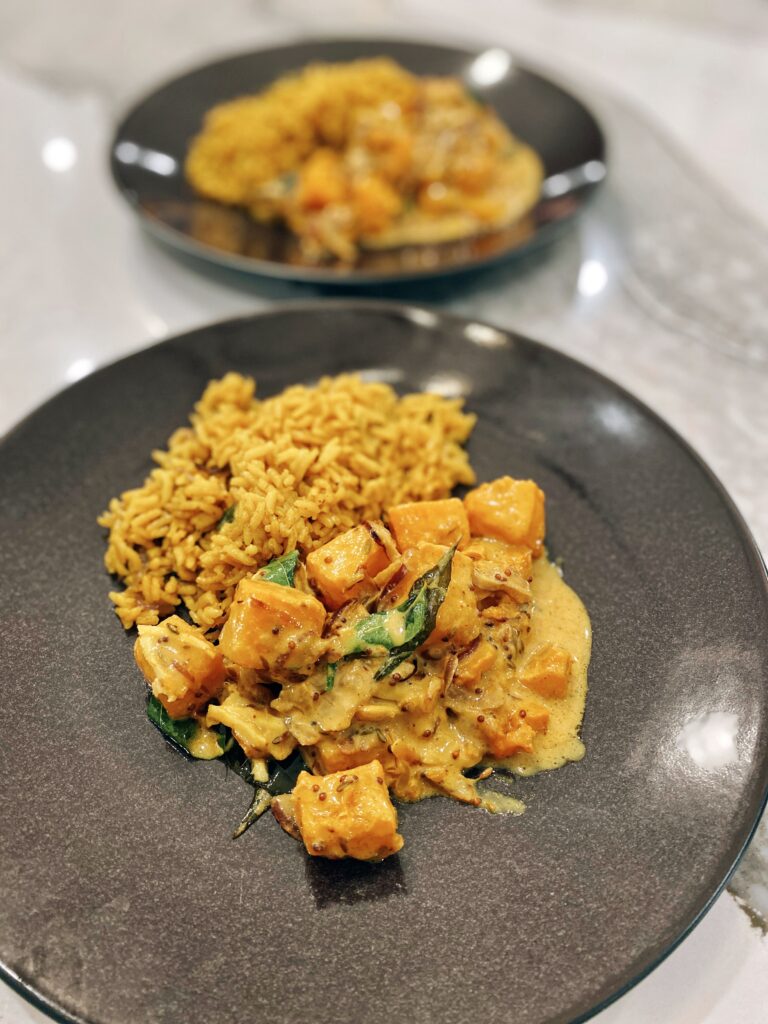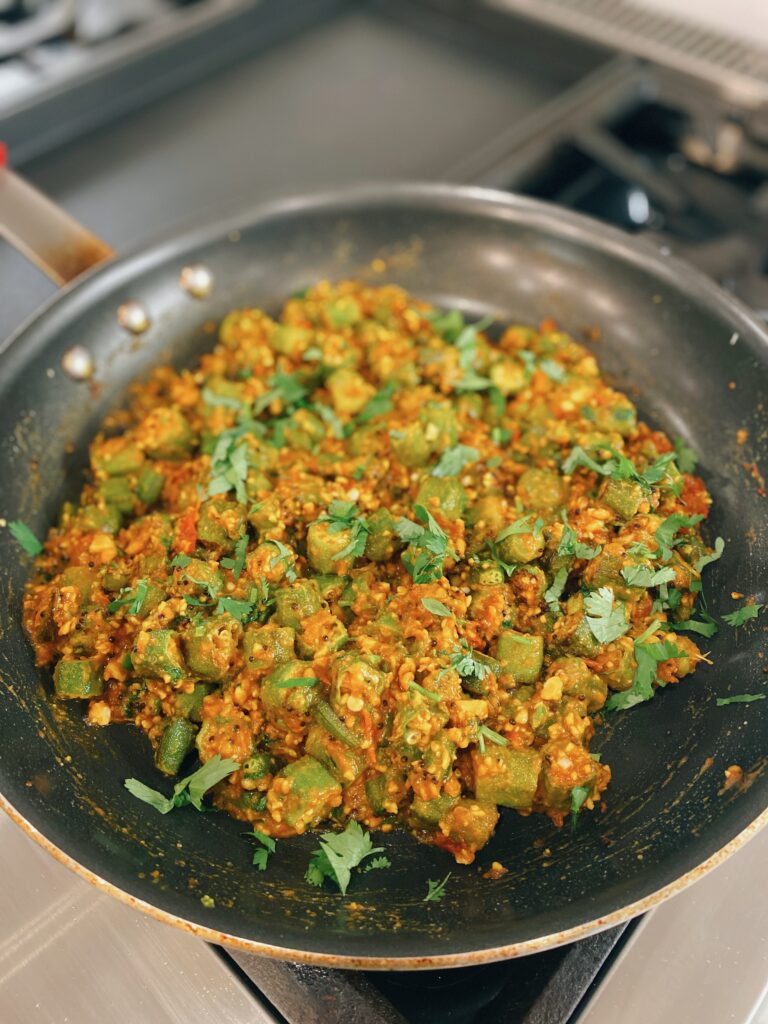This super easy yellow rice goes well with almost anything but my favorite way to serve it is alongside vegetable or legume curries, especially roasted squash curry. Or simply top with with a fried egg, some sambol and a spoonful of yogurt, and you have yourself an easy and satisfying rice bowl.

- 1 heaping cup basmati rice
- 1 1/2 tablespoons butter
- 1/2 red onion, thinly sliced
- 4 cardamom pods, lightly smashed in a mortar and pestle
- 4 cloves
- 10 black peppercorns
- 1 teaspoon turmeric
- 10 curry leaves
- 2-inch piece pandan leaf
- 1 1/4 cups chicken stock
- 3/4 cup coconut milk
- 3/4 teaspoon salt
- Rinse and drain the rice and set aside. In a medium saucepan, melt the butter over medium-high heat. Add the onion and fry for 5-7 minutes, until it is lightly golden brown. Add all the spices, the curry leaves, the pandan leaf, and the rice. Fry for 3 minutes, stirring constantly.
- Add the chicken stock, coconut milk, and salt, and bring to a boil. Reduce heat to a low simmer, cover with a lid, and cook for 12 minutes, until the rice is tender. Remove from the heat, remove the whole spices from the rice, and serve.




